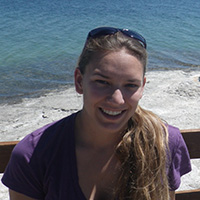 Analysis of Major Cations and Anions of Cold Springs in the Cuyamaca Rancho State ParkMichelle Baroldi Wednesday, May 8th, 2013 |
| ABSTRACT Cuyamaca Rancho State Park is host to a variety of springs within the San Diego Watershed. Located just 40 miles outside of San Diego nestled in the Lagunas Mountain Range, these spring provide us with an inside view on the hydrogeological processes that take place. The rocks in the area date back to Pre-Tertiary in age, and consist primarily of a crystalline complex. Residing at and around 5000 feet in elevation, this thesis focused on 6 springs, a snowmelt sample, and one culvert that channeled primarily surface water. Six of the seven locations visited in this thesis were previously sampled from 1975-1976 by Richard T. Higly, an SDSU Undergraduate student. He reported the rainfall, conductivity, temperature and discharge; additional lab data was provided for iron, silica, chloride, fluoride, and carbon dioxide levels. For the purpose of this thesis, the following sites were sampled: springs 102, 103, 204, 206, Culvert 101, Deer Spring and Azalea Spring. The springs are sorted into one of two categories: hard-rock springs, or soil zone springs. With the aid of the USGS, the samples were analyzed for all major cations and anions. The results were plotted on Piper diagrams and Stiff diagrams, and compared against each other as well as outside water samples. The soil zone springs contained similar results, while the contained aquifer leading to Azalea Spring contained a much higher amount of all of the major cations and anions. The exploration of these results may help to gain a better understanding of progression of impact upon the area. |

